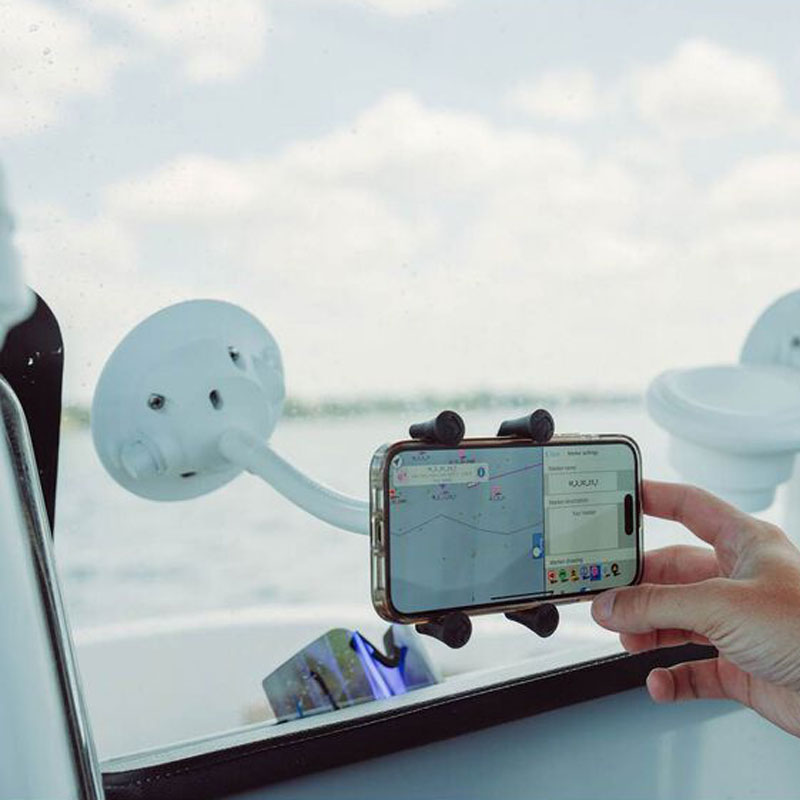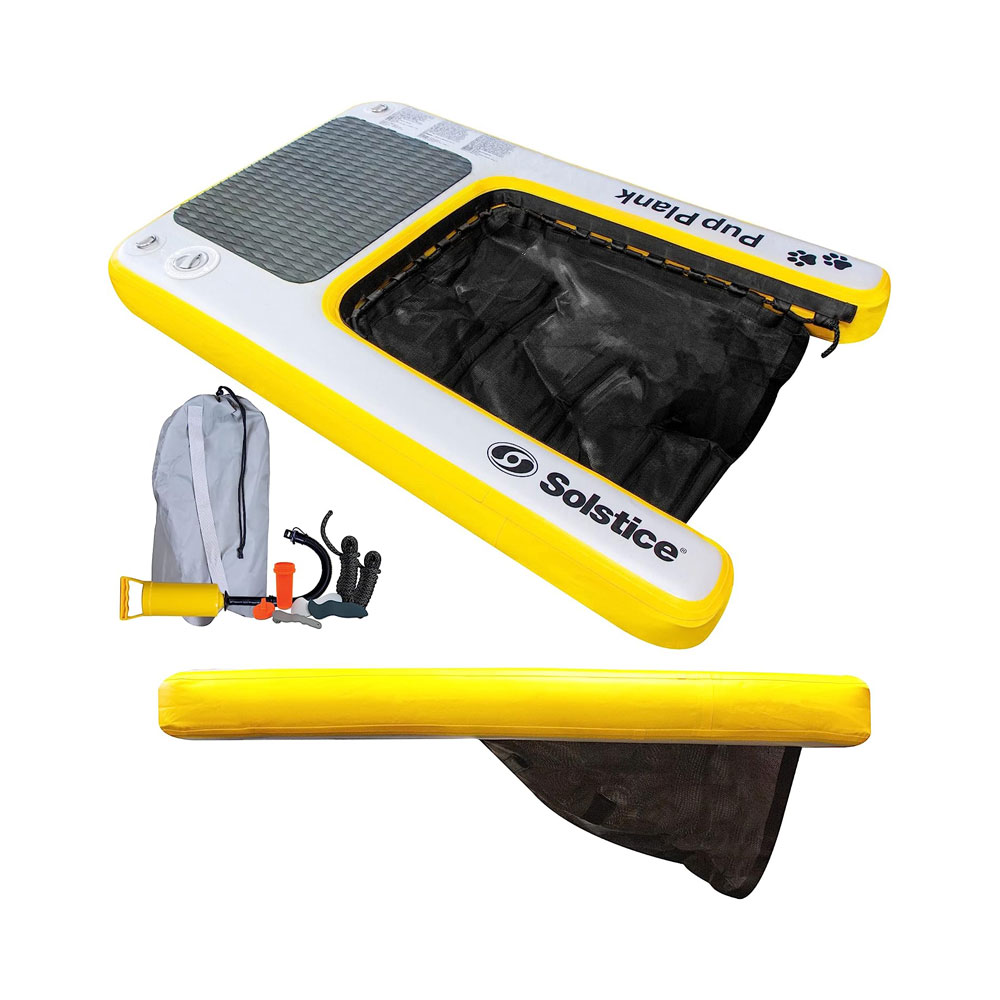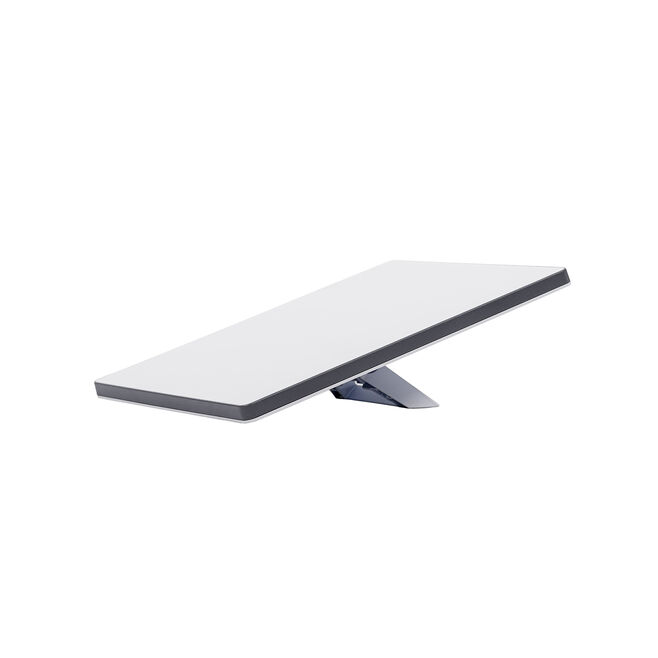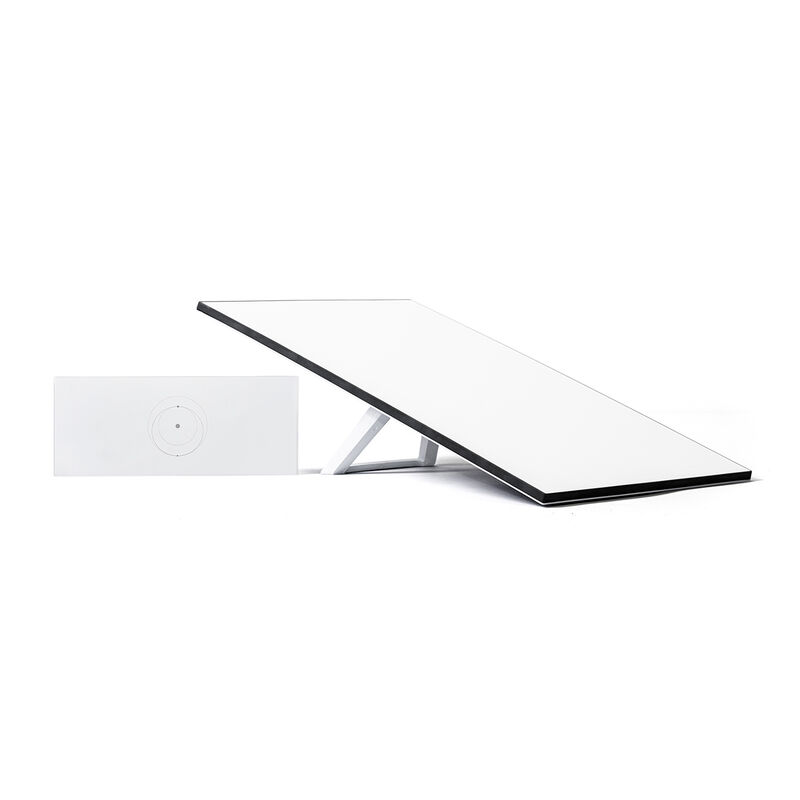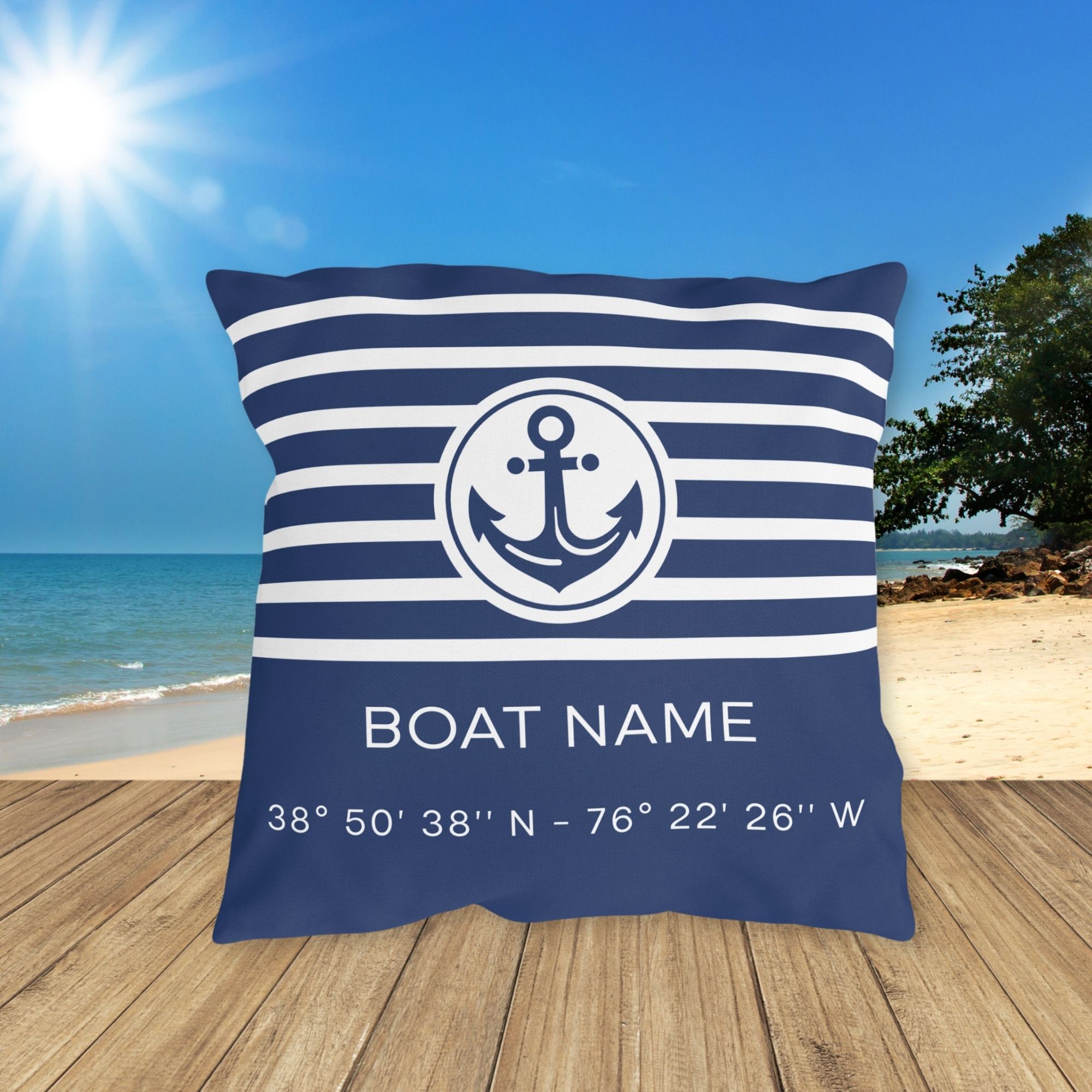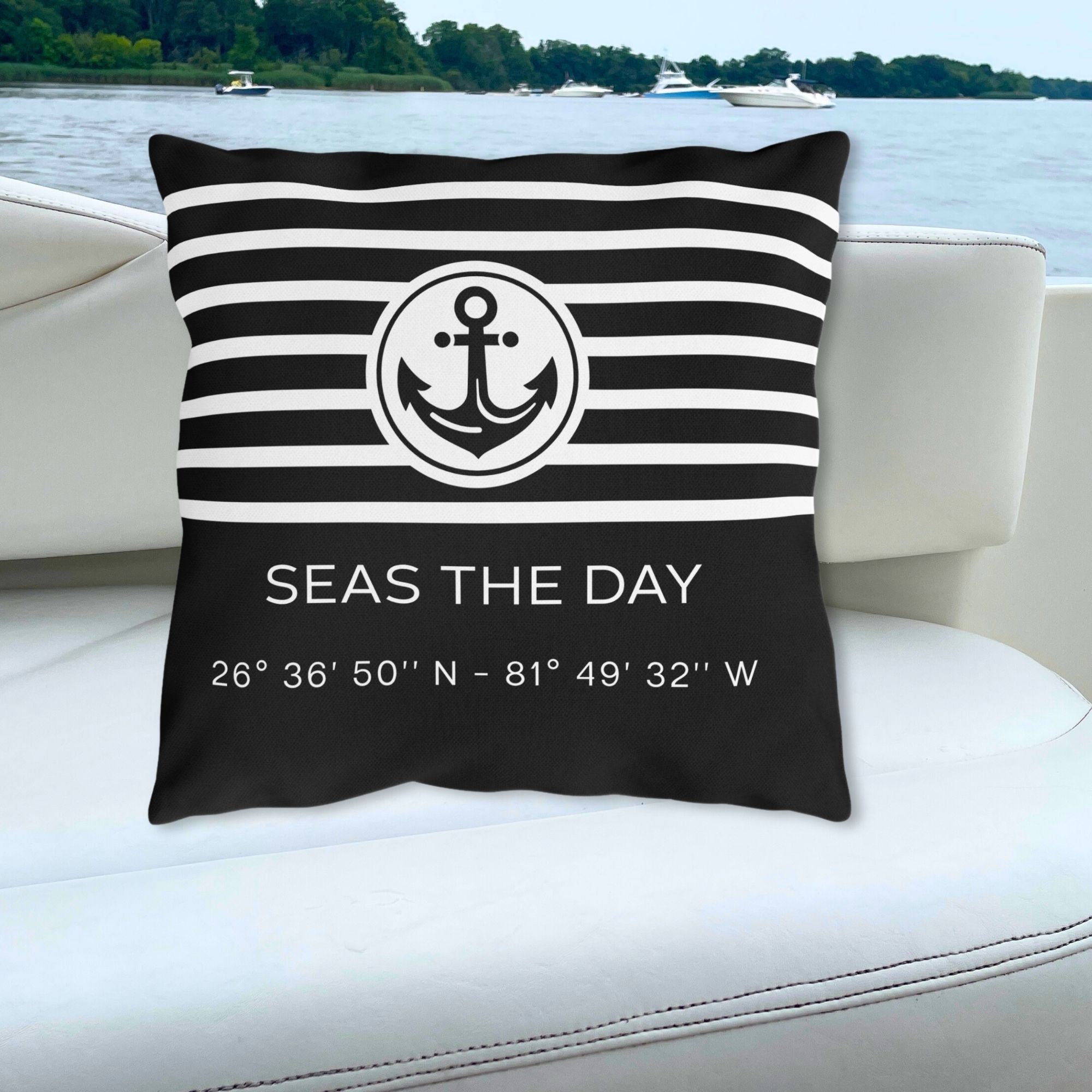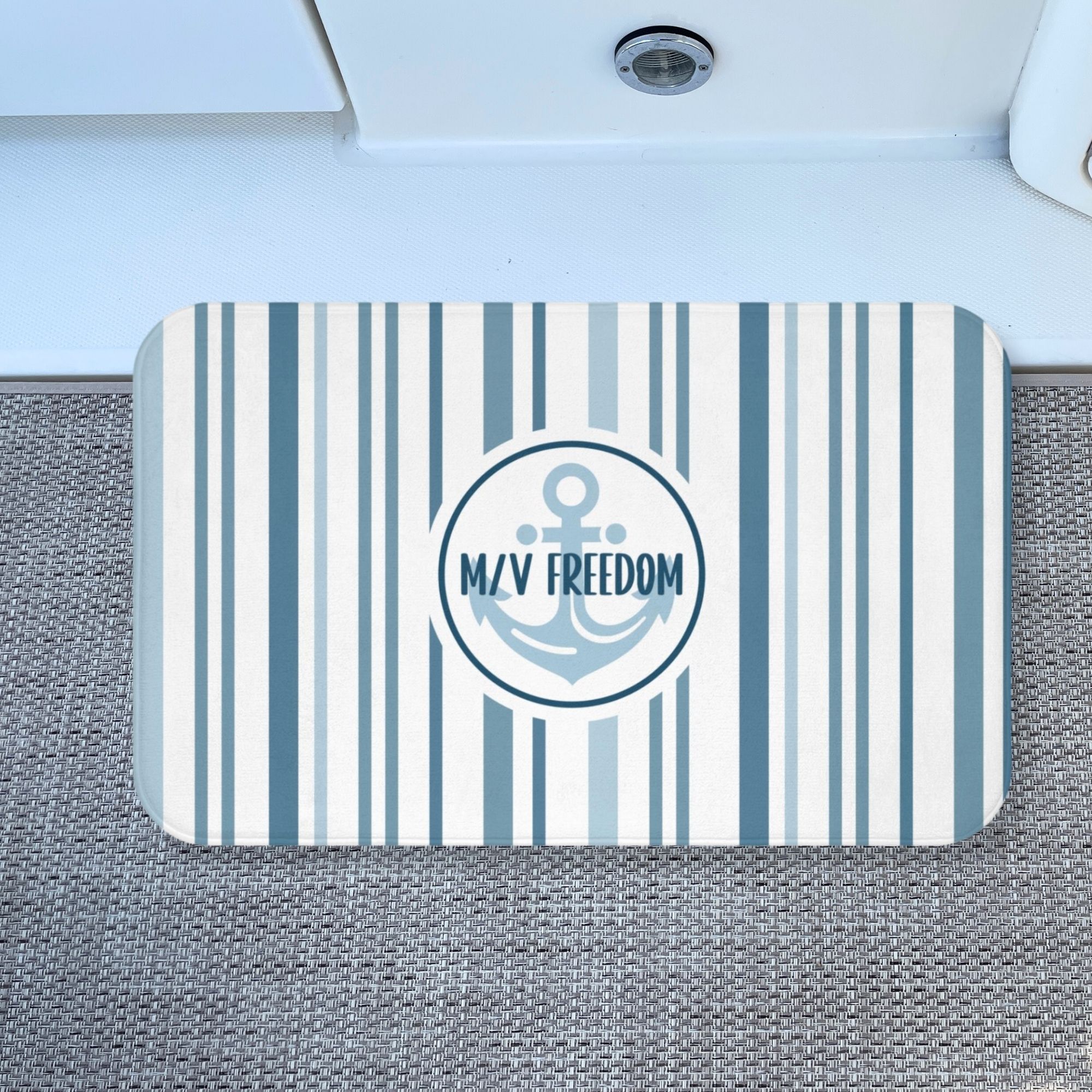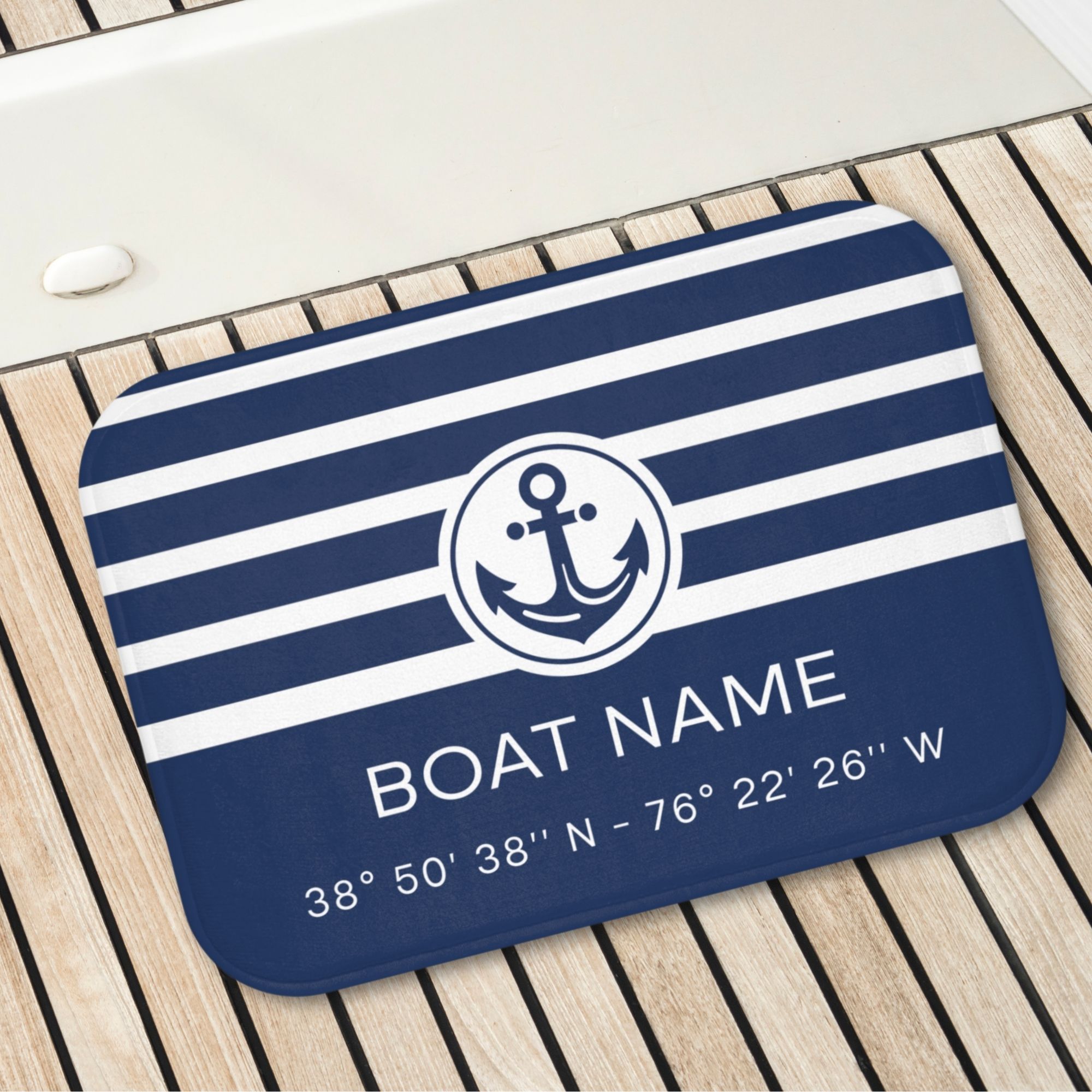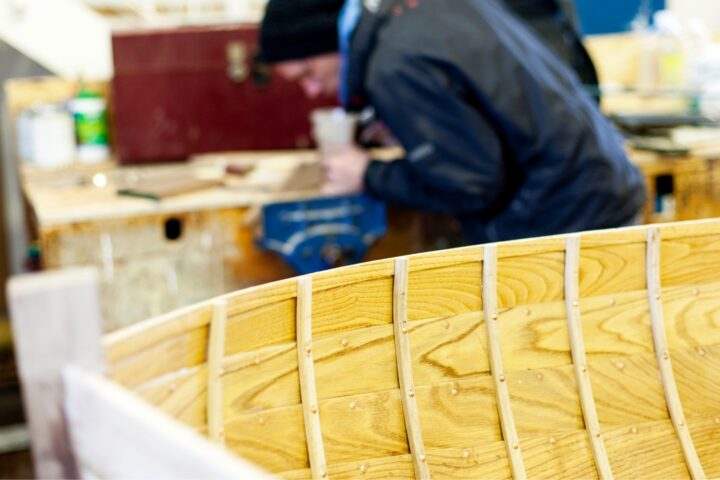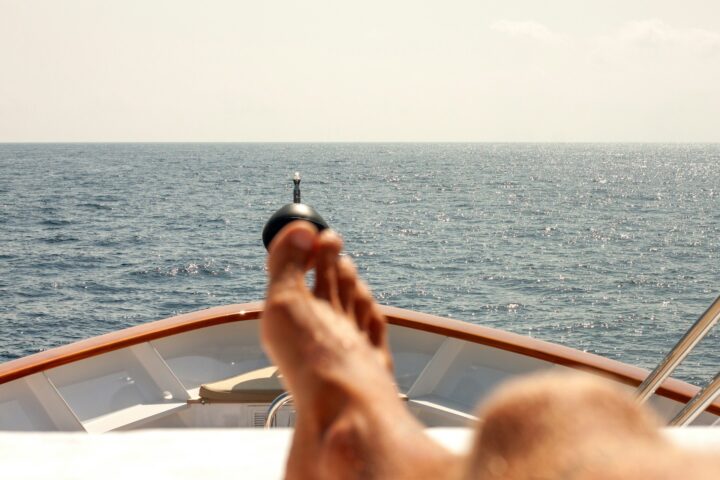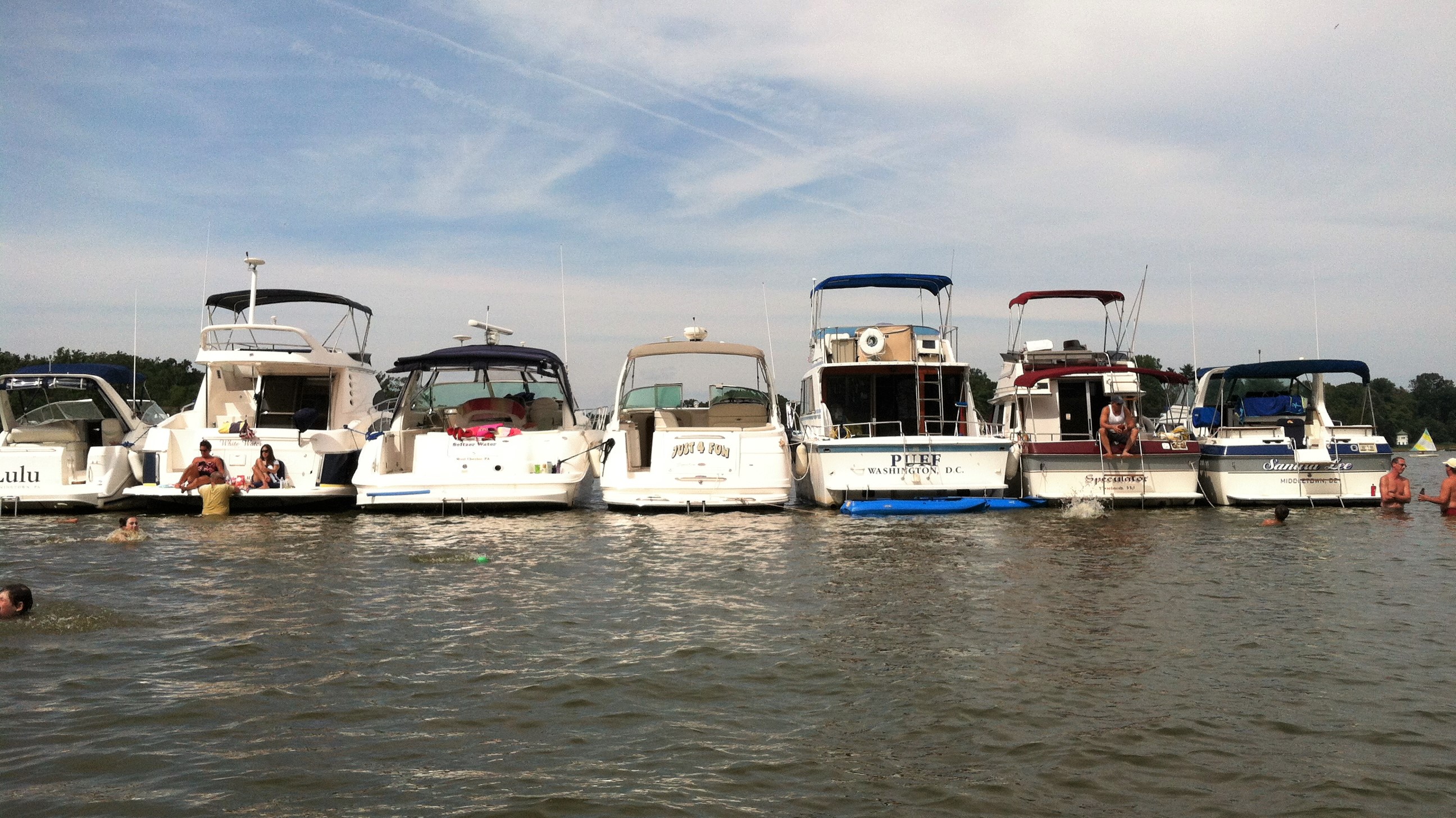
A how-to guide to safe and secure boat raft ups – raft planning, anchor position, fender and line use, overnight rafting and boat configurations
Have you ever dropped your hook in an anchorage and noticed 2 or more boats anchored and tied together? That is rafting… or a “boat raft up”.
Maybe you have had a rendezvous with friends and family on a number of boats. You’d like to all socialize but the best you know how to do is to dinghy or swim over to your friend’s boat. That could be hard on the hors d’oeuvres platter or the dessert tray you are carrying. Rafting two or more boats together is the solution! Whether you have a 50ft sailboat or a 24ft wake boat, there are basic skills you should know to do a good raft-up.
Below I will tell you how to do it safely and securely. I will also offer opinions on when NOT to raft up. With just a little practice and care, you can confidently put together secure rafts and then let the party begin!
Choosing a Boat Raft up Location
Rafting involves anchoring. Selecting an appropriate location to raft boats requires the same judgment one might use to select a place to anchor one boat. However, there will be additional concerns given that there will be more than one boat, probably multiple anchors, and potentially boats of different type and size.
The bottom line is that you will want to make sure you have room for a raft-up of the size you are planning. Since a raft-up is usually assembled for socializing, consider other boats in the vicinity. They may have selected the anchorage for its solace and quiet. Beyond the issue of how boats swing at anchor, consider how sound travels over the water and leave you neighbors an adequate buffer from your party.
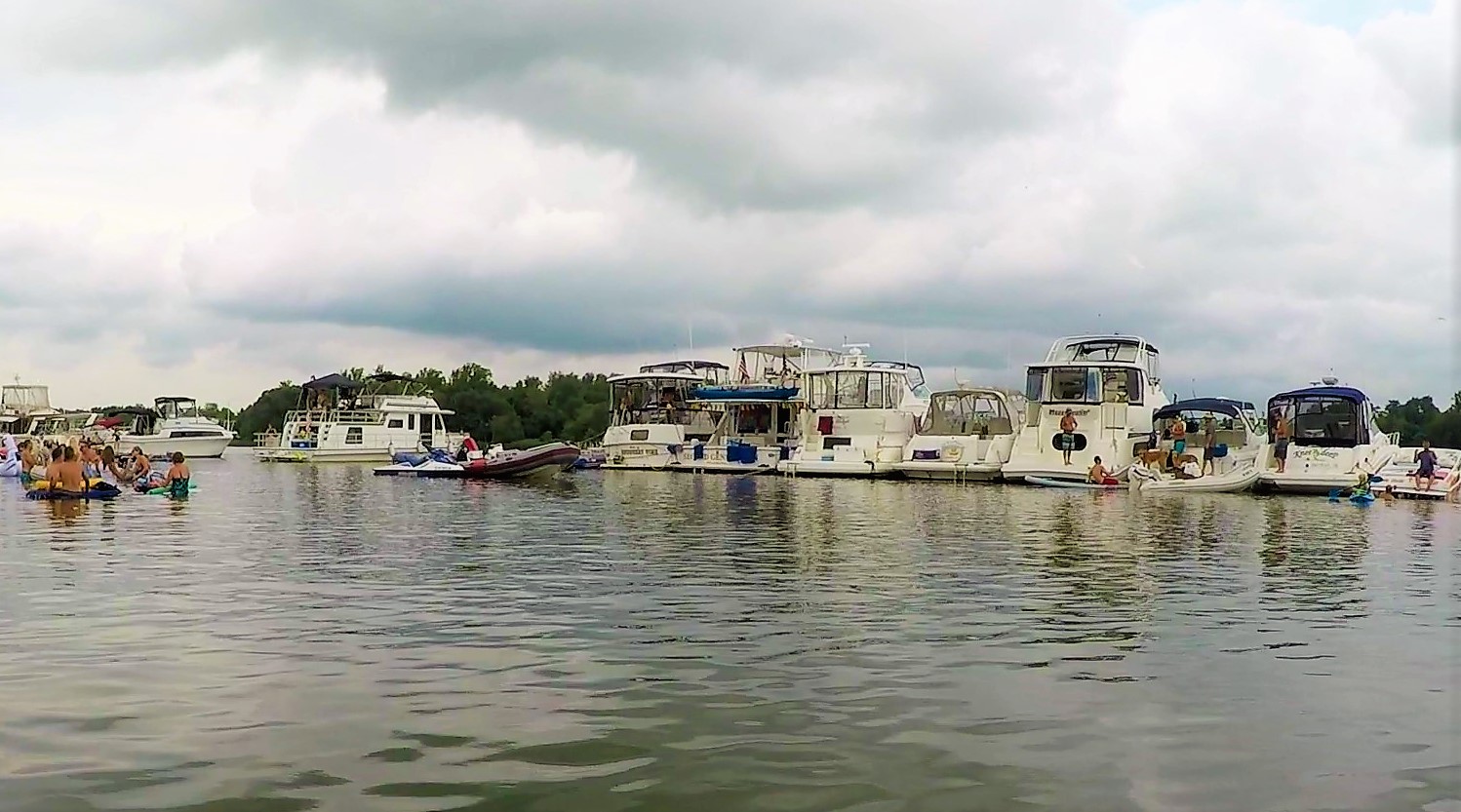
Breezy weather and shifting winds can be problematic. Finding a well-sheltered location would be desirable under those conditions. It is worth reiterating here that you should always avoid rafting near a lee shore. A high stand of trees on the windward side of a creek or cove can often provide an excellent wind break. In the summer, the early shade would also provide a welcome respite from the sun.
You will not want to be in an area with a lot of boat traffic. The swells from the wakes of other boats could put undo strain on dock lines and anchor lines.
Planning Phase
Regardless of the number of boats in the raft, it is important to identify one person who will act as Raft Control. This person is generally, but not necessarily, on the boat that anchors first. It is his or her responsibility to:
- Verify the selected anchorage is appropriate and safe for the planned raft
- Keep in constant contact with all skippers
- Direct each boat to join the raft in a specified position.
- Confirm that all skippers are secure and comfortable with the situation with their respective vessels
- Establish anchor watches
- Oversee the safe dismantling of the raft
*Also see my recommendations for raft up gear at the end!
Before getting underway, all of the skippers should meet and select a primary location and one or more secondary anchorages in which to build the raft. This would also be the time to lay out a preliminary raft plan…that is, who will anchor first, which boats will lay where, and which boats will set anchors in which direction. Other issues to consider are whether the raft will persist overnight or if it is only for an afternoon.
It is worth noting that a good number of skippers do NOT like leaving rafts assembled overnight and some do not like the concept of rafting at all. That is their right. The primary concern should always be safety of the vessels and the people aboard them. Everyone must agree to the plan as discussed. If a change is made after getting underway and regardless of the reason, Raft Control is responsible for communicating that with everyone.
Building the Boat Raft Up
First Boat
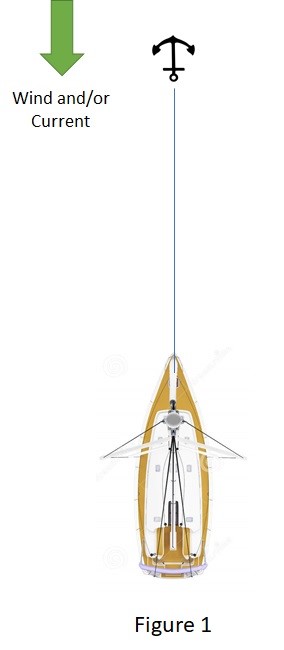
Raft Control should approach the selected location first. In general, the largest boat with the biggest and best anchor will be the first boat to set a hook. This boat becomes the core of the raft. It is therefore essential that a good set on the anchor is made. Be mindful that the raft will move differently than a single boat on an anchor. It should be expected that more than one boat will set an anchor. (I will get into those details shortly.)
Given the extra load of multiple boats, it is wise to err on the side of more scope when setting anchors. The core boat should set its anchor and then take several minutes to see how the boat lies to the anchor. (See Figure 1.)
Ideally the wind and/or current will be from directly ahead and is not veering significantly or erratically. If a shift in winds is forecast for overnight, it may be wise to orient the raft in the direction of the forecasted weather. Obviously there should be no dragging. As with anchoring a single boat, note cross bearings using clearly visible landmarks. This will allow you to monitor the position of the raft over time.
Once the boat is anchored, Raft Control should use a working channel (not 9, 13, 16, 22A, or 70) on the VHF to direct each boat into the raft one at a time. Whatever was determined in the pre-trip meeting regarding the order of assembly and who was setting anchors, should be reiterated in the radio calls to the approaching vessels. If a change in that plan is necessary, make it clear that it is a change from the plan.
As the raft comes together, skippers are to follow the instruction of Raft Control without hesitation. If Raft Control issues a call to break off or to disengage the engine, those commands should not be questioned. Additionally, only one boat should approach and connect to the raft at a time. This makes it utterly clear to whom Raft Control is speaking when issuing commands.
Regarding the position of anchors, some people like to use floats tied to the shank of the anchor and some people prefer keeping a light strain on the anchor lines to make it more obvious where they lie. Either will help while building the raft but having floats will make it more obvious to boats moving nearby that are not part of your group.
Additional Boats
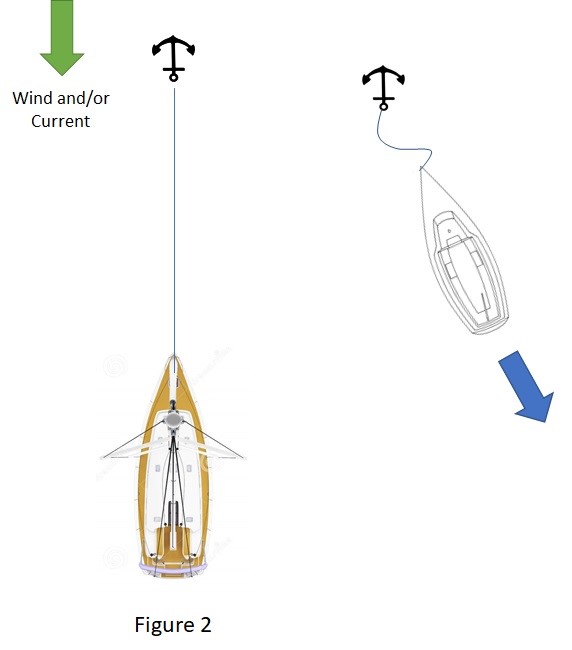
To keep the raft balanced, it is best add each additional boat on alternate sides of the raft. If the wind or current is slightly off to one side, I like to add the first boat on that side. While there may be some additional windage, the additional mass should act as a damper and moderate any motions caused by the wind.
For groups of 4 or more boats, try to avoid having adjacent boats set their anchors. That would reduce the risk of fouling anchor lines. However, if you only have 2 or 3 boats in your raft, then it is more advisable for everyone to set an anchor. Otherwise, designating every other boat to set an anchor is fine. There are other raft configurations that I will touch on later.
For those boats that set an anchor, they should position themselves outboard of where their final position will be in the raft. That is, if a boat will come along the starboard side of a rafted boat, it should set its anchor off the right somewhat so that when the boat joins the raft, its anchor line will tend off the bow to the right. (See Figure 2)
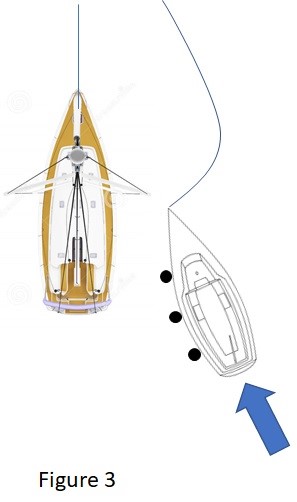
The angle formed by anchor line and the centerline of the boat should not be much more than 10 or 15 degrees. If approaching from the left side, then the anchor line would tend off to the left. In either case, they should set their anchor as if anchoring solo including verifying the set. Then they should drop back while paying out anchor line to keep it slack. (See Figure 3)
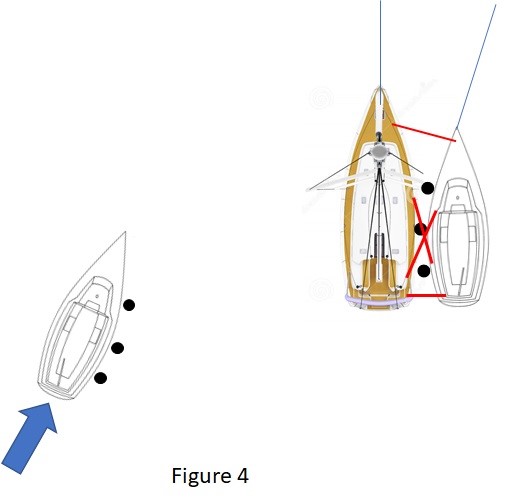
The idea now is to make the shallow angle approach to the raft by coming up from behind and laying alongside the adjacent boat. Once secured to the raft, all slack in the anchor line should be eliminated. (See Figure 4)
Boats which are not setting an anchor would simply make a shallow angle approach from astern. It is well to remember that the raft is not a fixed dock and can move freely. This is particularly important if, for some reason, the raft moves toward your boat as you are approaching leading the distance closing faster than you might have anticipated.
Each boat approaching the raft is to deploy its own fenders and its own dock lines. Only the core boat need not set fenders. The exception to this would if the shape and height of adjacent boats is different enough that more fenders should be used to protect the hulls. Send bow and stern lines first to control the lateral position of the boats. Then use spring lines to adjust the relative fore and aft positions of the two boats.
For sailboats, be mindful of the relative position of spreaders and masts. If the boat should roll in a swell or a wake, you do not want the rigs to collide. Boats tend to roll in opposite direction on a raft so at some point, they will roll TOWARDS each other. Keeping the masts and spreaders offset avoids collision and damage.
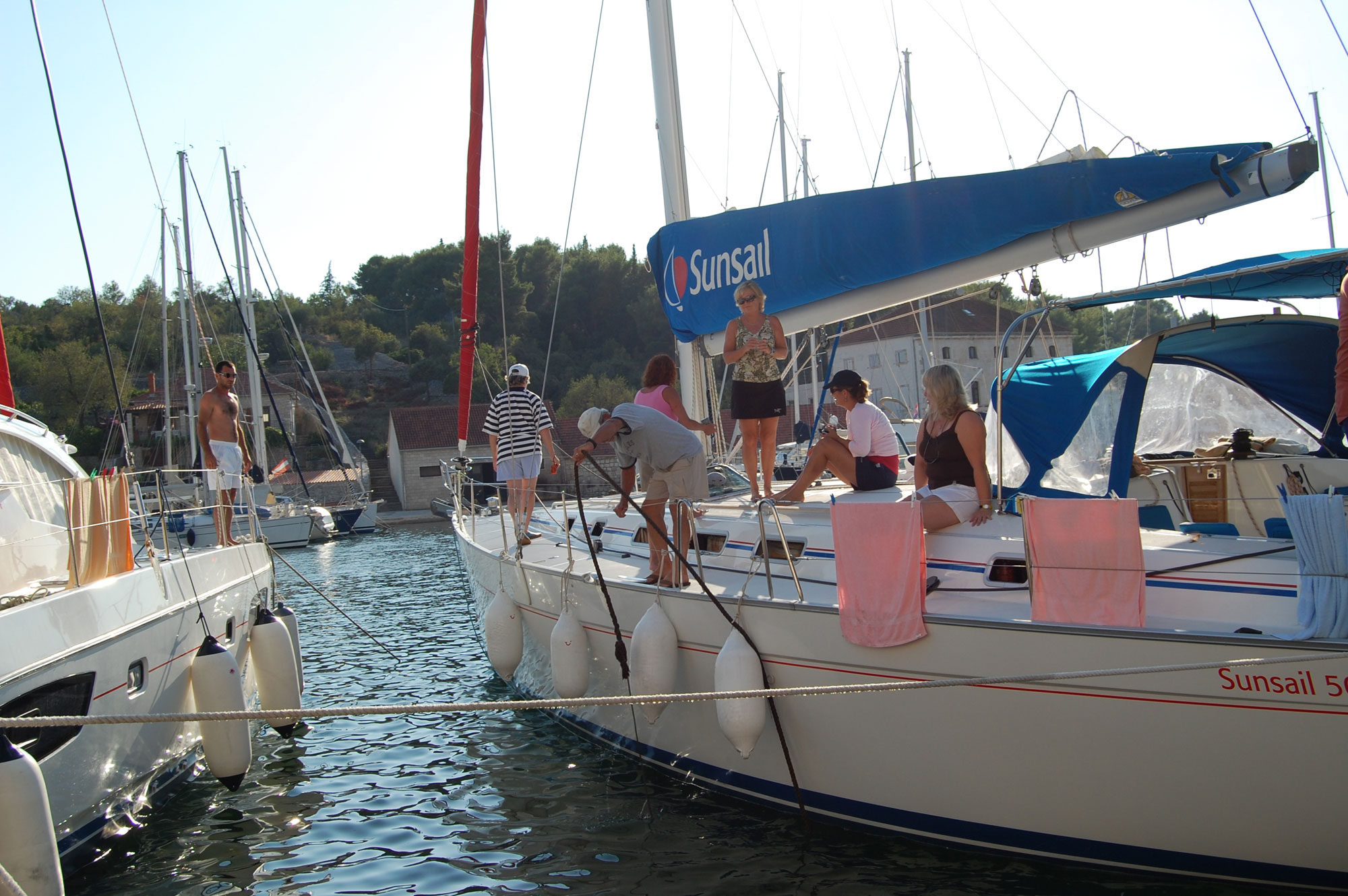
For sailboats, you can use winches to position adjacent boats fore and aft and then tighten the spring lines. This allows easy and fine adjustments without much struggle. If you can’t find a convenient deck cleat to use, you can run spring lines to shroud chain plates or even to the mast. In any event, the dock lines between all boats in the raft should be tight and without slack, even when the boats move.
It may be somewhat more difficult to get spring lines on power boats as tight without a winch as on a sailboat but it is no less important. The notion of offsetting masts and such is also less of an issue. However, the goal in all cases is for the raft to move in concert, more or less, as one vessel.
Completing the Boat Raft Up
After all the boats have been properly anchored and/or secured to the raft, Raft Control should convene a brief meeting of all the skippers. Do this before any food or drinks are set out or before any partying begins. Poll each skipper to make sure they are comfortable with their position in and connection to the raft. Also ascertain that everyone is comfortable with the position and set of the raft in general. Then begin anchor watches in rotating shifts. Each person on watch should know where the next person is sleeping so they can wake them when necessary.
If the raft lies askew of the anchor line from the core boat, it is worth considering whether an adjustment can or should be made or even if the raft should be disassembled and reassembled being more mindful of the set of the core anchor.
Also remember that all boats in the raft are to display anchor lights after sunset and anchor balls during daylight.
Leaving the Raft
Under normal conditions and when it is time to leave the raft, skippers should let their engines warm up and Raft Control will determine the order in which boats depart. Once departure clearance is granted, the skipper of the given boat will issue the appropriate commands to take in lines, retrieve the anchor if necessary, and move safely away from the raft.
Generally, the spring lines are let go first. Since the boats arriving on the raft use their own gear, as they leave it is easy to remember that the raft side gear belongs to the departing boat. Whether a boat backs away or pulls forward to leave will depend on weather conditions, where the anchor lines lay, and how the boat handles under power.
Oh Oh…!!! When Rafting Problems Happen
There may come a time where conditions…emergency, weather, or otherwise…dictate that the raft be broken up. And of course, this will always be under far less than ideal situations like a moonless night, high winds, driving rain, or a disabled boat. Then more than ever, order, procedure, and obeying Raft Control is imperative.
Some of the situations that might lead to an emergency raft break-up have already been listed in the first sentence of this paragraph but other reasons include the raft is dragging or lines have slacked or broken.
Follow the commands of Raft Control. She or he will know who is where and the best route away from the abandoned raft. In bad weather or windy conditions, have your VHF on and turned up so you can hear. In emergencies, there is likely to be lots of shouting and other noises. In practically every one of these situations, the best immediate solution in the dark is to break up the raft and have everyone anchor individually. Once boats have safely cleared the raft the individual skippers will have the responsibility for safe operation of their vessels.
Other Boat Raft Up Configurations
There are more advanced configurations you can use in different conditions. For instance, if you have a raft that you don’t want to swing or move for one reason or another, you arrange the boats such that each one alternates which direction it points. With boats in both directions setting anchors, the raft should not swing or move. This would also address the situation where the winds shift 180 degrees.
If a linear raft would be too wide for the anchorage, you could assemble two rows of a more or less equal number of boats with the sterns together. Boats in both directions would set anchors which yields the same benefits mentioned above.
This article generally addresses the situation where all of the boats in a given raft are of the same type: power or sail. However, it is not completely unrealistic that you may participate in a raft of a mix of sail and power boats. My advice is that if one type predominates and the sizes among all boat are all similar, the more common type should be in the middle (core) of the raft and the minority boats should be positioned at the outer edges unless the sizes of the boats vary enough that they need boat size determines raft order more than boat type.
In all cases, skippers must be mindful of the differences in deck heights, hull curvature, and any potential conflicts with above deck hardware or rigs like light towers, fishing outriggers, and other things.
If you have never participated in a raft, start with small simple linear rafts. Practice all the basics from planning through execution. You may not want to stay rafted overnight the first few times. With more experience, it will be a comfortable and familiar maneuver. And soon you will be able to spontaneously respond and adapt to various rafting situations.
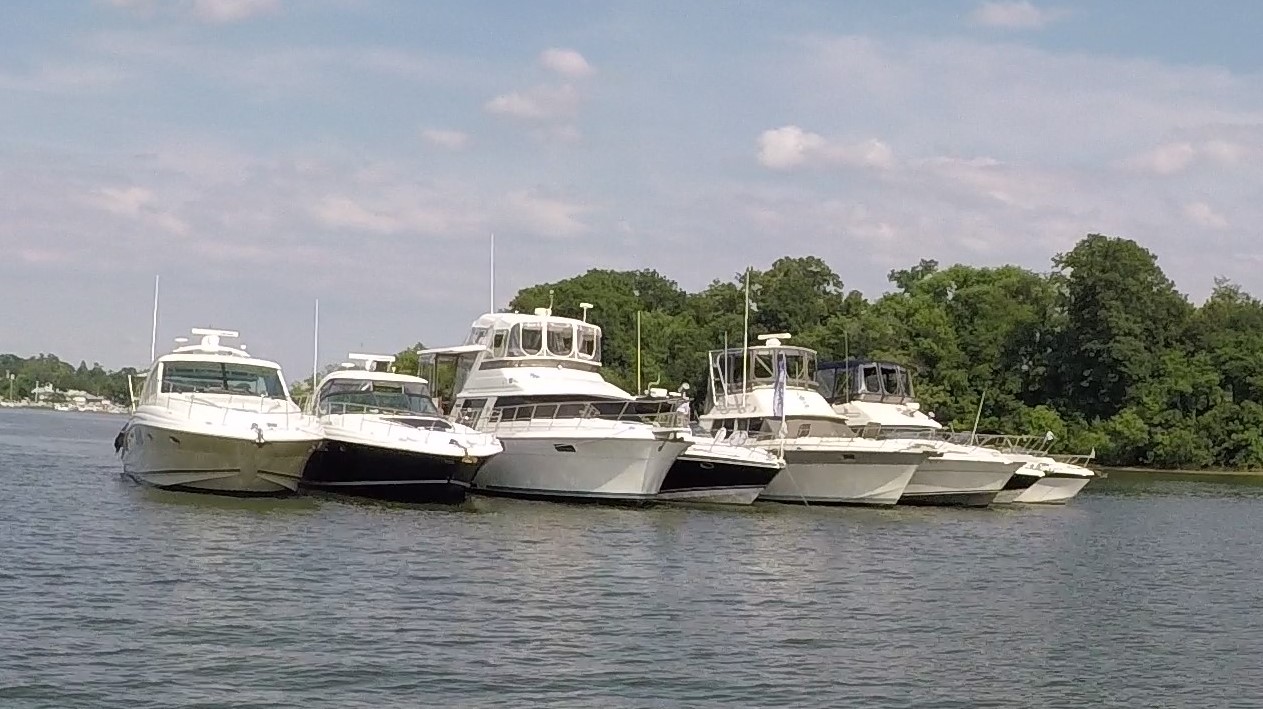
Summary & Gear
Rafting is a great way to enjoy your friends on other boats. Sharing amongst boats becomes much easier. It is somewhat similar to going from room to room in a house party…except you have to climb over a rail to get to each room! Try it! You might like it.
If you’re not sure you have the right gear on your boat, here are some of my recommendations for future raft ups:
Boat Fender Set – this set of four boat fenders by Yescom will ensure you have plenty of fenders on board.
Dock Lines – extra dock lines will always come in handy… make sure you have a good mix of line lengths.
Anchors – can your anchor hold a raft up? The Lewmar Claw is a great option that is known to hold in nearly any condition.
Anchor Rode Kit – ensure your windlass is in ship shape – it may be time to upgrade your anchor rode.
Feel free to ask questions or ask advice for your specific circumstance. I will look for your party on the water!
Trending Now: Must-Have Boat Gear for Your Boat Life
-
SeaSucker Flex-X Cell Phone Mount
$99.00 Quick ViewBuy on West Marine -
Inflatable Floating Pet Ramp
$249.00 Quick ViewBuy on West Marine -
Starlink Mini Kit for High-Speed, Portable Internet on the Go
$599.00 Quick ViewBuy on West Marine -
Sale!
Starlink Standard Kit for Stationary Use: High-Speed, Low Latency Internet
Original price was: $499.00.$349.00Current price is: $349.00. Quick ViewBuy on West Marine
Trending Now: Custom Boat Decor
-
Boat Pillow with Boat Name & LAT LONG Coordinates
Quick ViewBuy on Etsy -
Boat Pillow with Boat Name & LAT LONG Coordinates- Black
Quick ViewBuy on Etsy -
Coastal Blue Stripes Bathmat with Anchor & Boat Name
Quick ViewBuy on Etsy -
Custom Boat Mat with Boat Name & LAT LONG Coordinates
Quick ViewBuy on Etsy
Disclosure: This site may contain links affiliated with companies where we receive compensation. Also, as an Amazon Associate we may earn from qualifying purchases we refer but it does not impact the price you pay. Full disclosure policy.

